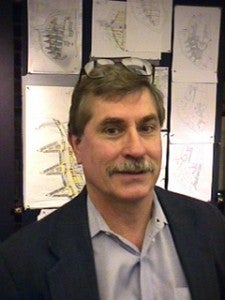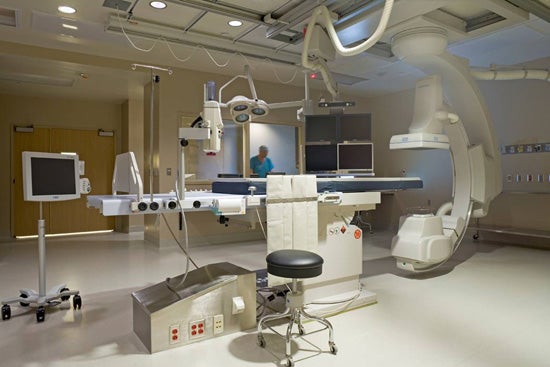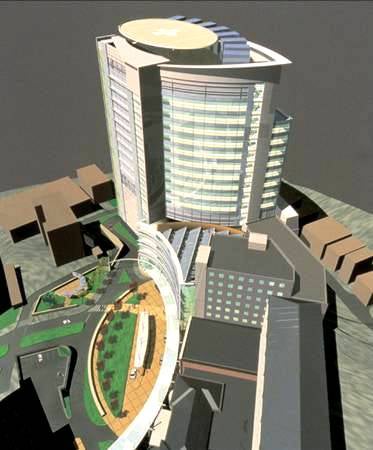bachelor of architecture ’67
Transformational design is his global focus
Bruce Bonine, BArch ‘67, has spent 45 years providing architectural consultation and medical planning services worldwide. After serving as principal at NBBJ for 23 years, in 2004 he founded Medical Facility Innovations, Ltd., of Mercer Island, Washington, which focuses on creative and transformational medical center design worldwide.

Bonine, AIA, NCARB, ACHA, has planned and designed facilities in Austria, Canada, Iceland, Slovakia, Korea, New Zealand, China, Iran, Turkey, and the United States.
He began his architecture studies at UO after two years exploring a variety of majors at other colleges. “I wasn’t really sure why I wanted to be an architect, but I was intrigued with what (UO architecture Professor) Philip Dole had to say about designing environments. So, in 1963, I applied to UO.”
Bonine began his UO architecture studies in 1964. “It wasn’t easy,” he recalls. “Unlike most of my classmates, I had no background or experience in architecture. I struggled greatly with the curriculum, especially the design studios, but I had many amazing teachers, including Phil Dole, Bill Kleinsasser, Donlyn Lyndon, and Bill Turnbull encouraging me and spurring me on.”
Bonine recalls that Lyndon was known for sometimes “scathing and brutal” critiques during project reviews, “but I built thicker skin and seemed to turn the corner after two years of reviews, when Lyndon commented: ‘Bruce I didn’t know you had it in you – congratulations.’ To that point, I had struggled so much that I wasn’t confident that I could ever be successful in architecture. It is hard to describe how much difference that one positive comment from Lyndon made for the rest of my life and my career.”

Above: A conceptual design for a competition for a new hospital in Akershus, Norway. Image courtesy Bruce Bonine.
Bonine has served worldwide as an innovative designer, researcher, and medical planner, helping clients transform business initiatives into creative facility solutions that are patient-focused, adaptable, and cost-effective.
“I have to thank the University of Oregon’s School of Architecture for encouraging me to think much more broadly, to question all ‘truths,’ to act collaboratively, and to create truly integrated and comprehensive environments,” he says. “A&AA was an amazing experience for me, opening my eyes to how the inter-disciplinary profession of architecture should and could influence the built environment and have a positive, or negative, affect on all of our lives.”
Key influential ideas for him at UO included Sea Ranch in California; Lyndon and Charles W. Moore’s “Toward Making Places”; Marshall McLuhan’s “Understanding Media” and “The Medium is the Massage”; Christopher Alexander’s “A Pattern Language”; and work by Louis Kahn and Moshe Safdie.
“All were catalysts for a new way of thinking about how the places we create have so much meaning for us, changing who we are – as McLuhan said ‘We create our tools and thereafter our tools create us.’ From this notion about how architecture massages us and changes us came the transformational ideas about healing environments that are the cornerstone of my work in healthcare worldwide.”

Above: Competition entry for a new hospital in Dongsan, Korea. Image courtesy Bruce Bonine.
In 1971, Bonine passed the architectural licensing exam in Oregon on the first try and went on to become registered in Washington, California, England, Scotland, and Wales.
He worked for multiple firms initially, exploring every facet of the profession, then in the mid-1970s moved to Iran. He spent two years there, redesigning the historic city of Bandar-e-Bushehr and helping create Shari-Saniteh-Rasht, a brand-new industrial city on the Caspian Sea.
On his return to the United States, Bonine launched into design of healthcare environments, first in the U.S. and ultimately worldwide.
“I was lucky to be able to work with Jim Jonassen, the head of NBBJ’s world-renowned healthcare practice. Jim became my mentor and encouraged me to think about how transformational a healing environment could be for patients and how important it was for healthcare environments to be adaptable. I began exploring these ideas and writing extensively about them, often speaking to sessions of the AIA’s Architecture for Health group.”
He is a founding member of the American College of Healthcare Architects and now serves on the board of the AIA’s Architecture for Health Panel.
Bonine has contributed to eleven award-winning projects and participated in thirteen published projects, including articles and speeches on “flexible/adaptable” medical facility planning strategies, value management, alternative healthcare futures, and sustainable healthcare environments.
He credits his experiences at UO for helping shape his contributions to architecture and healthcare.
“I am indebted to the University of Oregon for helping me understand that architecture is all about making creative places that have memorable, beneficial, sustainable impacts on people’s lives.”

Above: An interventional surgery suite for Kaiser’s Oakland Medical Center in Oakland, California. Image courtesy Bruce Bonine.

Above: A birdseye view of a new hospital for Samsung in Seoul, Korea. Image courtesy Bruce Bonine.
This story was published as part of the 100 Stories collection, compiled to celebrate our 2014 centennial and recognize the achievements and contributions of our alumni worldwide. View the entire 100 Stories archive on the College of Design website.
